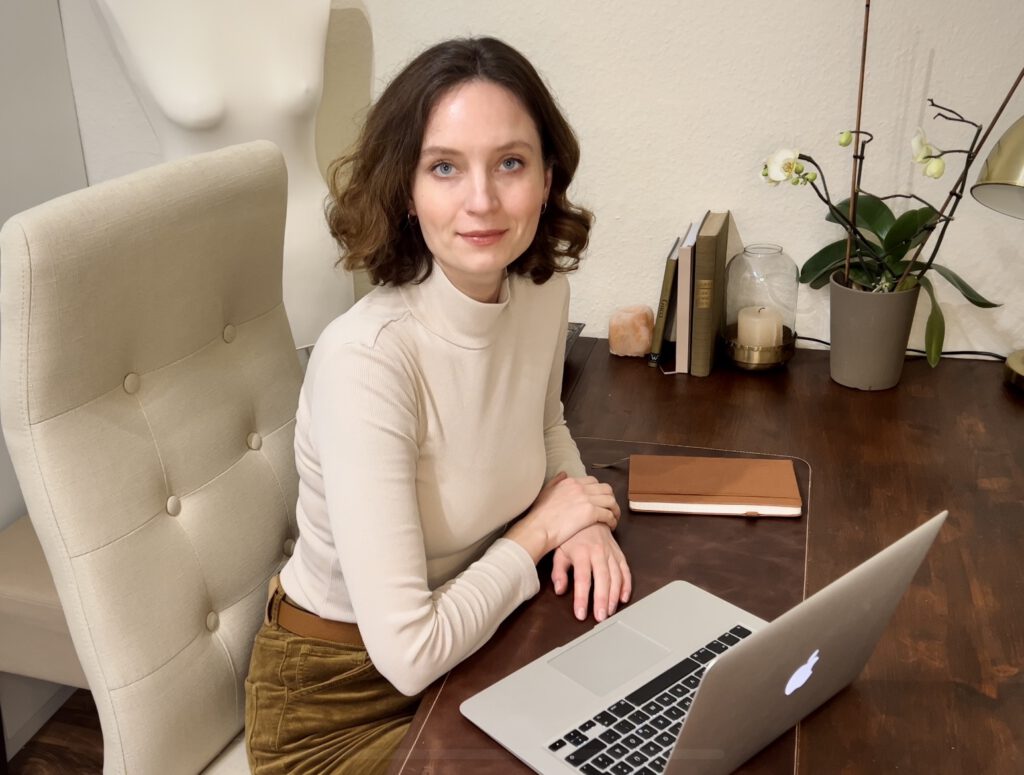Affiliate Disclosure
Some of the links on this page may be affiliate links. As an Amazon Associate, I earn from qualifying sales from these links. If you make a purchase or sign up for a membership through these links, I will receive a small commission. This will not cause any additional costs for you. This income helps us to run this website and especially the blog for you.
Introduction
Our exterior is a reflection of our interior. Our clothing and furnishings tell a story about us and our identity. In this post, I’ll explain 7 surprising explanations of what design has to do with identity.
1. Our reflection in the mirror
Our exterior is a reflection of our interior. Some people who are at peace with themselves and have a very “round” personality show this as a matter of course and the sight of these people often gives an interesting, but very consistent, harmonious picture. The person comes across as authentic and at peace with himself. The external reflection of a person who has personality problems, however, often looks inconsistent and inharmonious. The garments often do not fit together. The outfit appears indiscriminately, by the way, the same can also affect the furnishing of an apartment. Most of the time, the apartment looks like the person himself. If a person is unkempt, the apartment is usually not very well maintained. Other people try not to show their true reflection and disguise it. Some are aware of this, others are not. These people seem either disguised and conspicuously “loud” or inconspicuous, meaningless.
2. Clothes make the man
I’m sure everyone has heard this sentence before. And there is some truth to it. After all, people first perceive external features and unconsciously evaluate them within fractions of a second. The subconscious already forms an opinion about the person without us consciously thinking about them. The same happens when we enter an apartment or house. Nowadays people also like to speak of “vibes” or vibrations that emanate from people or things to describe whether you have received a good or bad feeling or an impression of it. And our identity arises in the context of our social environment.
3. What is the truth of “Fake it till you make it”?
What’s the difference between an authentic overall picture and an inauthentic attempt to be someone or pretend to be an IDentity that you obviously don’t have? Nowadays we are easily blinded, because you can’t get a realistic overall impression of a person just by looking at an Instagram picture. Someone who lives his true self and shows it clearly to the outside world usually has some kind of personal branding. This runs through the entire life. The clothes match, the apartment or property in which the person lives fits, the décor follows this branding and also the job and hobbies of the respective person. The overall picture is very “round”, everything seems coordinated and complementary. At best, however, not too perfect. Not as planned overnight and taken 1 to 1 from a furniture store, but as if grown over time.
4. Can a stylist or interior designer help?
Yes and no. Really good interior designers or stylists can usually create a suitable, but optimized reflection of the person in question in exchange with the clients. It is not uncommon for designers in particular to be people who have either developed a so-called “signature style” for themselves, from which they never deviate. It is not uncommon for them to turn their identity into a brand. Or they are constantly evolving and you can clearly see the change in them. Many people are very much oriented towards the outside and basically just wear the same clothes as everyone else. Obviously, you can’t go wrong.
Jeans and sneakers, plus a T-shirt, ready. Furnishings from Ikea, bought and assembled as seen in a furniture store, ready. Of course, you can do that if you don’t attach importance to it.
However, if you notice people who achieve the effect described above and you wonder what these people do differently and how they do it, then it is worth thinking about the topic. For example, a personal stylist can sometimes bring out a person’s true personality by choosing outfits that are right for them.
At best, you feel really good in your clothes from the first moment. You should feel safer, more confident, more like yourself. In any case, you shouldn’t feel disguised. The same principle applies to the interior. A good interior owner can create a home that the occupants find inspiring, motivating, energizing or calming, depending on what effect should be educated for the person. In any case, an environment can be created that supports and reinforces the personality and personal preferences. And, above all, personal goals.
5. What personal goals have to do with design
Everything is somehow connected. For example, if you are single and actually want a relationship, then it would not be conducive to finding a partner if you only have a single bed, only a small table with a chair or no space for things from another person. Maybe you don’t really take the needs of others seriously or put your own needs clearly above those of others. In any case, you obviously don’t plan anyone else into your life. And people feel that.
However, if you have an apartment that provides space for another person, and their comfort and well-being are also taken into account, then the resident is probably a person who perceives the needs of another person at least equally and a potential new partner will feel this. This person will probably be more successful in finding a partner. So if your goal is to share your life with someone, make room for the person you want before they enter your life.
Include their needs in decisions for your interior. This will certainly increase the likelihood that you will meet someone suitable.
Another example would be if you want a certain job, in an industry where a certain style of clothing is worn. If, for example, business formal is worn there, but you have only ever worn casual clothing, then this will be immediately noticeable during a job interview if you don’t feel comfortable in your clothes or if you “try” too much to appear appropriate. You will probably not come across as authentic to the HR manager or recruiter during a job interview. But if you are already regularly dressed in business chic or formal and have had time to develop your own style, then you feel comfortable in your clothes, then you look as if you have always been dressed this way and thus much more confident. This will also be felt by the HR manager during a job interview and, subsequently, by the new colleagues.
6. Shaping the future with design decisions
The interesting thing about it is that many dream of their dream job or dream house or leaf through a fashion magazine and wish they would look like it, but then they don’t act. Because they believe that first the longed-for outcome must occur and then they would or could live as they believe that it would be suitable for it. But unfortunately it doesn’t work that way at all. Which is why, for example, lottery millionaires often find themselves destitute again after a short time. Firstly, you usually don’t just end up with what you wish for and secondly, if you do, then all the other necessary factors have not changed yet and you tend to lose what you get because you can’t adapt quickly enough. You don’t wake up overnight and suddenly become a different person.
7. The roadmap to a new “me”
The trick is “reverse engineering“. With some project management methods, a backward approach is often planned. So you define your goal or design or identity goal in this case and the actual state.
Feel free to write it down or paint it down.
At the top of a piece of paper, write a dot with your goal, i.e. the TARGET state. At the bottom, write a dot and your current state. Then you connect both points with a line. But now you don’t start planning at the bottom, at the ACTUAL state, but at the top at the TARGET state. You think about what was the last step that the (a fictitious person) person had to take or have to take in order to achieve this goal in the next step. And so on. For each section, draw a dot on the line and describe the necessary steps next to it. What does the person need to know? Where does she have to go? What kind of environment does she have to be in? How does she spend her time? What does this person look like?
What most of you will probably notice is that when you are done and then mentally walk the path from bottom to top, i.e. from the ACTUAL to the TARGET state, then it becomes clear that the (still) fictitious person cannot start implementing the necessary things when he has arrived at the next point. But that it gets there, as a logical consequence of the implementation of certain changes and things it does.
Conclusion
In my eyes, everything has to do with “design”. Everyone is a designer of their life. But not everyone succeeds intuitively. It helps to know and understand certain mechanisms and to apply helpful strategies. It certainly takes a lot of courage to show yourself to the world as you really are or want to be. Stand by who you are. Be proud of yourselves. Wear your own style with pride and confidence. Do the things you love with conviction. Work on your goals, every day.
I wish you a wonderful weekend.
All the love
Christina
“Why should we all dress the same fashion? The frost never paints the same ice flowers on my window twice.”
Lydia Maria Child
Share this post:

We’re excited
to share our news with you!
Would you like to receive information about our latest articles and our latest products directly in your mailbox?
Sign up for our newsletter!
We’d love to keep you in the loop.
About the author

Christina Ernst is founder and CEO of Linen & Quince. She is also a designer, author and real estate expert. She shares her experiences and knowledge not only on our Linen & Quince blog, but also on her personal blog, christinaernst.net , where she writes about financial knowledge, starting a business, real estate knowledge and personal development. She loves interior design, art, antiques, as well as elegant, sustainable and high-quality fashion.



